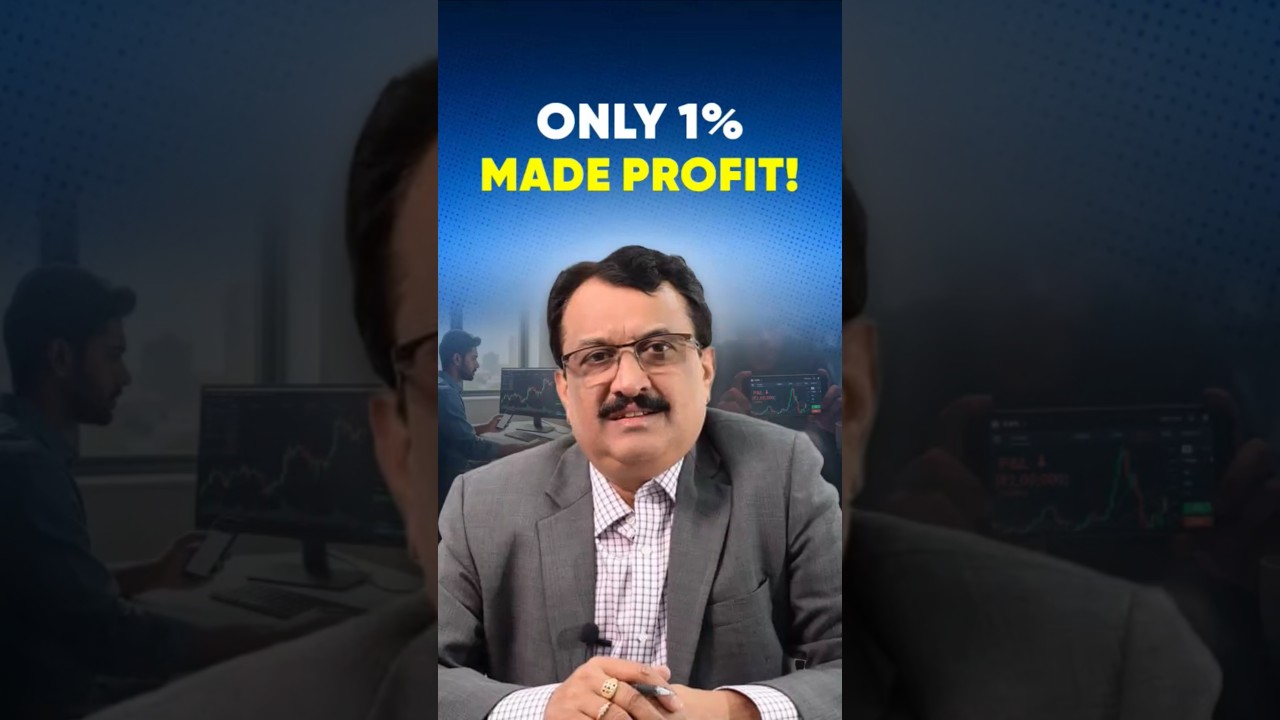Between 2020 and 2024, the stock market was everyone’s favorite topic.
Every dinner table, every WhatsApp chat, every news headline revolved around one message: “If you’re not investing, you’re missing out.”
Then came 2025. The excitement faded, the markets slowed down, and the same investors who couldn’t stop checking their portfolios suddenly decided they wanted nothing to do with equities. Overnight, enthusiasm turned to disappointment.
So what changed?
Not the markets — just investor behavior.
The All or Nothing Trap
Many investors behave like children in a toy store. They either want everything or nothing.
When markets soar, they rush to invest every rupee they can find. When the market dips, they panic and pull everything out.
This all-in or all-out approach might sound bold, but it’s often one of the worst habits an investor can develop.
It replaces discipline with drama and patience with panic.
According to Manu Jain, Co-founder of Value Metrics Technologies, this emotional pattern is a dangerous loop that hurts long-term returns. Successful investing is about balance, not extremes.
Markets Reward Discipline, Not Emotion
The truth is simple. Markets don’t move in straight lines.
They rise, they fall, and sometimes they do both in a single week.
No one can predict every twist. Crashes, recoveries, and surprises are all part of the journey. The global financial crisis, the tech bubble, the Harshad Mehta scam, and the Covid crash — none of these came with a warning bell.
When investors exit completely during tough times, they usually miss the rebound that follows. The regret of missing out often pushes them to re-enter too late, creating a costly cycle of fear and FOMO.
The better strategy is to stay invested, stay diversified, and stay calm.
Think in Probabilities, Not Predictions
Too many investors treat the stock market like a fixed deposit. They expect fixed returns every year and are shocked when that doesn’t happen.
Equity investing doesn’t work that way. It is based on probabilities, not promises. Instead of assuming a guaranteed outcome, investors should think in ranges.
For example:
“If things go well, my return could be 12 to 14 percent. If not, I might still earn slightly above inflation.”
This shift from certainty to probability allows investors to stay rational even when markets fluctuate. It removes the need to chase perfection and replaces it with confidence in long-term results.
Volatility Is Not the Villain
The reason equity can deliver higher long-term returns is because it comes with volatility. The ups and downs are not a flaw — they are the price of long-term growth.
If the market offered 12 percent returns every year without any fluctuation, it would be no different from a savings product. The reward exists precisely because of the risk. Understanding this truth is what separates investors from speculators.
The Secret Sauce: Position Sizing
Even when markets look attractive, going all in is rarely a good idea. The smarter approach is called position sizing — knowing how much to invest at a time. Warren Buffett once said that wealth is created when crisis, cash, and courage meet.
But in reality, few investors manage to act courageously during a crisis. Most panic instead. Manu Jain offers a more practical approach: Confusion, Clarity, Conviction.
Confusion: The best time to invest. Prices are fair, and emotions are low.
Clarity: When everyone feels optimistic, prices are often expensive.
Conviction: The belief that clarity will return and markets will recover.
In other words, don’t wait for perfect certainty to invest. By the time it arrives, the opportunity is gone.
Building a Durable Portfolio
A strong portfolio is like a well-balanced meal. It needs the right mix, not an overdose of one ingredient. Here are three principles every investor should follow:
Time: The longer you stay invested, the better your odds of success.
Diversification: Spread investments across asset classes and sectors to reduce risk.
Discipline: Stick to your plan, especially when emotions run high.
Think of investing as a game of skill, not luck. Even the best hand can lose sometimes. The goal is to stay in the game long enough to win over time.
Practical Habits That Work
Follow asset allocation. Adjust exposure to equities based on market conditions, not gut feelings.
Separate needs. Keep emergency funds apart from investment capital.
Use market moods wisely. When valuations are low, hold off on big purchases and stay invested. When valuations are high, take some profits and enjoy your rewards.
Invest regularly. Even if you buy at market peaks, consistent investing smooths out volatility and protects long-term growth.
The Bottom Line
Investing is not about timing the market but about spending time in the market.
The goal isn’t to predict every turn — it’s to stay the course.
All-or-nothing behavior turns wealth creation into a guessing game.
Balanced, disciplined investing turns it into a journey of steady growth.
Because in the end, successful investors are not those who panic first or predict best — but those who stay patient long enough to let time do its work.











